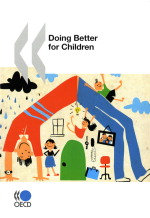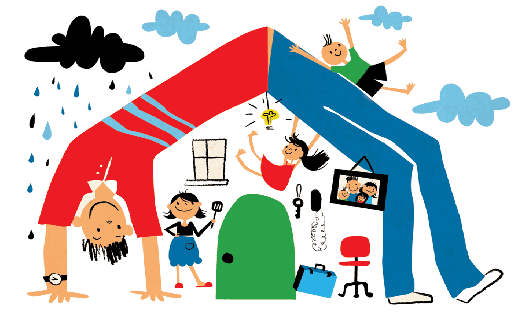Please cite as: OECD (2009), Doing Better for Children
Bookmark this page: www.oecd.org/els/social/childwellbeing
|

|
Click on the image for a free preview
ISBN Number:
978-92-64-05933-7
Publication Date:
1 September 2009
Pages: 191
|
|
|
|
Table of Contents | How to obtain this publication
Press material | Country highlights | Key data
The well-being of children is high on the policy agenda across the OECD. But what is the actual state of child well-being today? How much are governments spending on children and are they spending it at the right times? What social and family policies have the most impact during children’s earliest years? Is growing up in a single-parent household detrimental to children? Is inequality that persists across generations a threat to child well-being? Doing Better for Children addresses these questions and more.
How does child well-being compare across OECD countries? Chapter 2 presents a child well-being framework and compares outcome indicators for children in OECD countries across six dimensions: material well-being; housing and environment; education; health; risk behaviours; and quality of school life. Read the full chapter Comparative Child Well-being across the OECD.
Chapter 7 offers a range of policy recommendations for improving child well-being. Read the full concluding chapter Doing Better for Children: The Way Forward.
|
|
| |
|
Country-specific information
|
|
|
|
Press material
|
|
|
|
Key data on child well-being
|
|
Our child well-being framework compares outcome indicators for children in OECD countries across six dimensions: material well-being; housing and environment; education; health; risk behaviours; and quality of school life. Data are available either in:
-
OECD eXplorer combines maps and graphs with stories allowing users to examine time developments and interrelations between indicators. Select indicator for colours in map, for scatterplot, see stories with animated graphs; generate your own stories.
-
-
|
|
Online Annexes to Chapter 3:
Social Spending across the Child's Life Cycle
|
|
|
|
Other Child Well-being related websites
|
|
|
|
How to obtain this publication and other related books
|
|
Readers can access the full version of Doing Better for Children choosing from the following options:
Related reading:
-
-
Babies and Bosses – Reconciling Work and Family Life: A Synthesis of Findings for OECD Countries (2007)
|















